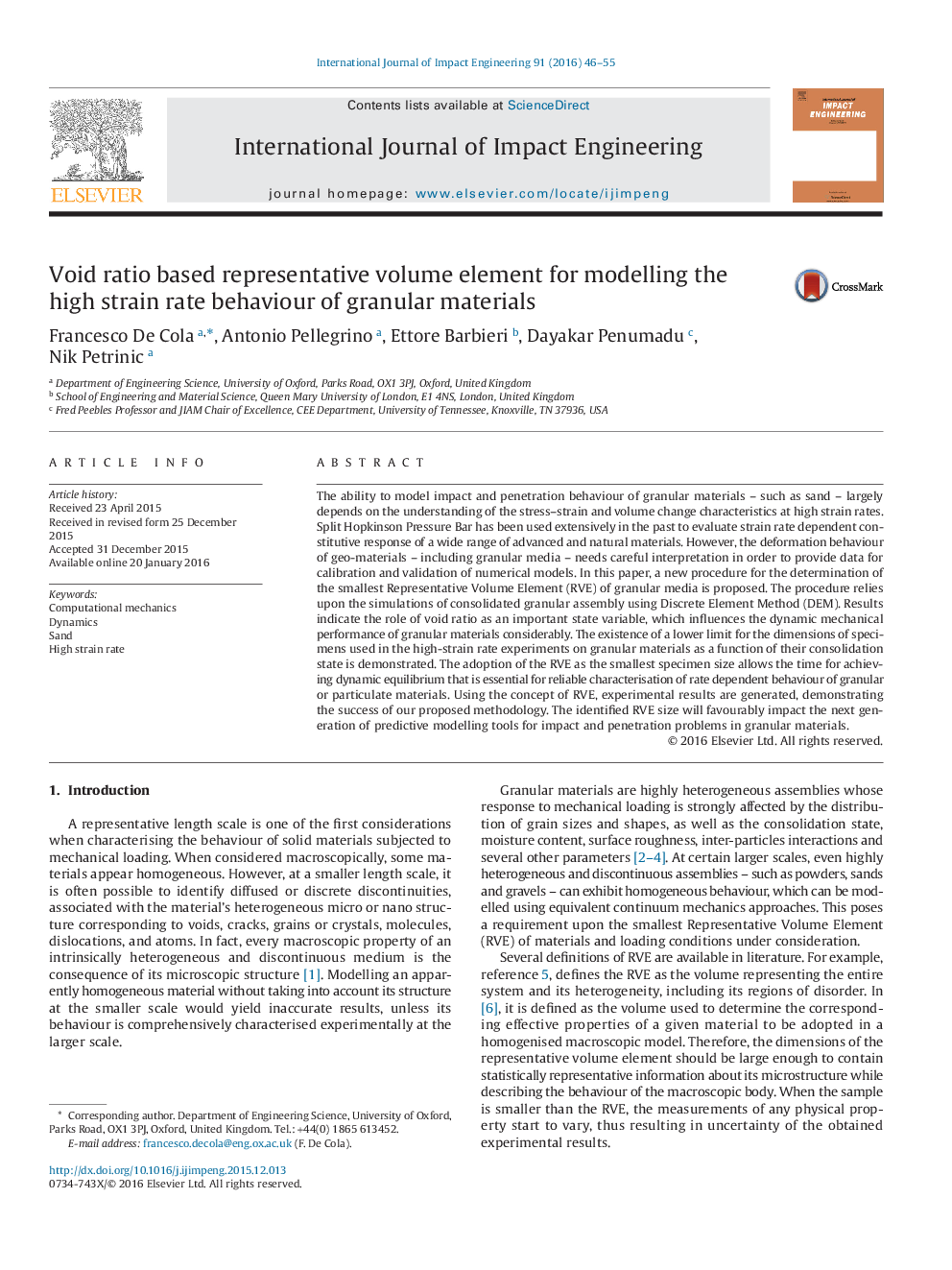| Article ID | Journal | Published Year | Pages | File Type |
|---|---|---|---|---|
| 782795 | International Journal of Impact Engineering | 2016 | 10 Pages |
•A new approach for the definition of the RVE for granular material is proposed.•The estimation of the RVE (via geometric deposition/DEM) is based on the initial compaction state.•The dimensions of the sample used for SHPB tests cannot be reduced below the proposed RVE sizes.•A sample smaller than the minimum RVE is not statistically representative of the initial void ratio.•The use of samples of size equal to the RVE results in a better repeatability of the SHPB experiments.
The ability to model impact and penetration behaviour of granular materials – such as sand – largely depends on the understanding of the stress–strain and volume change characteristics at high strain rates. Split Hopkinson Pressure Bar has been used extensively in the past to evaluate strain rate dependent constitutive response of a wide range of advanced and natural materials. However, the deformation behaviour of geo-materials – including granular media – needs careful interpretation in order to provide data for calibration and validation of numerical models. In this paper, a new procedure for the determination of the smallest Representative Volume Element (RVE) of granular media is proposed. The procedure relies upon the simulations of consolidated granular assembly using Discrete Element Method (DEM). Results indicate the role of void ratio as an important state variable, which influences the dynamic mechanical performance of granular materials considerably. The existence of a lower limit for the dimensions of specimens used in the high-strain rate experiments on granular materials as a function of their consolidation state is demonstrated. The adoption of the RVE as the smallest specimen size allows the time for achieving dynamic equilibrium that is essential for reliable characterisation of rate dependent behaviour of granular or particulate materials. Using the concept of RVE, experimental results are generated, demonstrating the success of our proposed methodology. The identified RVE size will favourably impact the next generation of predictive modelling tools for impact and penetration problems in granular materials.
